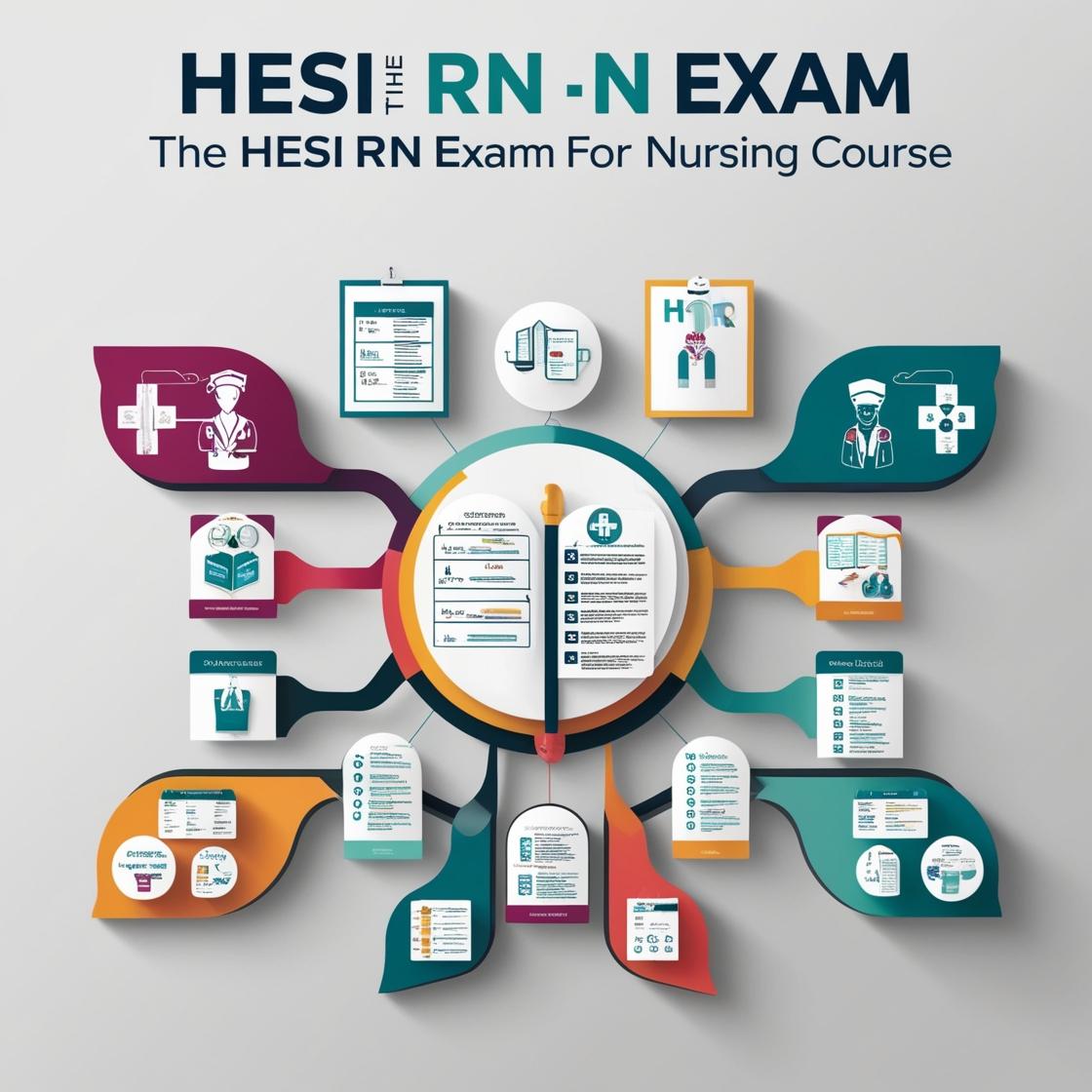HESI RN
Evolve HESI Medical Surgical Practice Exam Quizlet
1. A young adult is burned when wearing a shirt that was splashed with lighter fluid and caught on fire while attempting to light a charcoal grill. The client ripped off the shirt immediately, without unbuttoning the sleeves, which caused circumferential burns to both wrists. When the client is admitted, which intervention should the nurse implement first?
- A. Monitor pulse intensity.
- B. Evaluate extremity sensation.
- C. Assess range of motion.
- D. Place sterile bandage on both wrists.
Correct answer: A
Rationale: Monitoring pulse intensity is the priority to ensure circulation is not compromised due to circumferential burns.
2. To assess the quality of an adult client's pain, what approach should the nurse use?
- A. Observe body language and movement.
- B. Ask the client to describe the pain.
- C. Identify effective pain relief measures.
- D. Provide a numeric pain scale.
Correct answer: B
Rationale: The correct answer is to ask the client to describe the pain. This approach allows the nurse to gather subjective information directly from the client, such as the quality, intensity, location, and factors that aggravate or alleviate the pain. Observing body language and movement (Choice A) can provide additional cues but may not fully capture the client's pain experience. Identifying effective pain relief measures (Choice C) and providing a numeric pain scale (Choice D) are important aspects of pain management but do not directly assess the quality of the client's pain.
3. What do crackles heard on lung auscultation indicate?
- A. Cyanosis.
- B. Bronchospasm.
- C. Airway narrowing.
- D. Fluid-filled alveoli.
Correct answer: D
Rationale: Crackles heard on lung auscultation are caused by the popping open of small airways that are filled with fluid. This is commonly associated with conditions such as pulmonary edema, pneumonia, or heart failure. Cyanosis (Choice A) is a bluish discoloration of the skin and mucous membranes due to low oxygen levels in the blood, not directly related to crackles. Bronchospasm (Choice B) refers to the constriction of the airway smooth muscle, causing difficulty in breathing but does not typically produce crackles. Airway narrowing (Choice C) can lead to wheezing but is not directly linked to crackles heard on auscultation.
4. Laboratory findings indicate that a client's serum potassium level is 2.5 mEq/L. What action should the nurse take?
- A. Inform the healthcare provider of the need for potassium replacement.
- B. Prepare to administer a glucose-insulin-potassium replacement.
- C. Change the plan of care to include hourly urinary output measurement.
- D. Instruct the client to increase daily intake of potassium-rich foods.
Correct answer: A
Rationale: A serum potassium level of 2.5 mEq/L is critically low, indicating severe hypokalemia. The immediate action the nurse should take is to inform the healthcare provider of the need for potassium replacement. Option B, preparing to administer glucose-insulin-potassium replacement, is not the first-line intervention; it may be considered in specific situations but requires a healthcare provider's prescription. Option C, changing the plan of care to include hourly urinary output measurement, is not the priority when managing critically low potassium levels. Option D, instructing the client to increase daily intake of potassium-rich foods, is not appropriate in this acute situation where immediate intervention is needed to address the dangerously low potassium level.
5. The client with peripheral vascular disease (PVD) and a history of heart failure may have a low tolerance for exercise due to:
- A. Decreased blood flow.
- B. Increased blood flow.
- C. Decreased pain.
- D. Increased blood viscosity.
Correct answer: A
Rationale: The correct answer is A: Decreased blood flow. In clients with peripheral vascular disease (PVD) and a history of heart failure, decreased blood flow due to heart failure can result in reduced oxygen delivery to tissues. This reduced oxygen supply can lead to low exercise tolerance. Increased blood flow (Choice B) is not typically associated with reduced exercise tolerance in these clients. Decreased pain (Choice C) and increased blood viscosity (Choice D) are not the primary factors contributing to low exercise tolerance in this scenario.
Similar Questions

Access More Features
HESI RN Basic
$89/ 30 days
- 50,000 Questions with answers
- All HESI courses Coverage
- 30 days access @ $89
HESI RN Premium
$149.99/ 90 days
- 50,000 Questions with answers
- All HESI courses Coverage
- 30 days access @ $149.99
